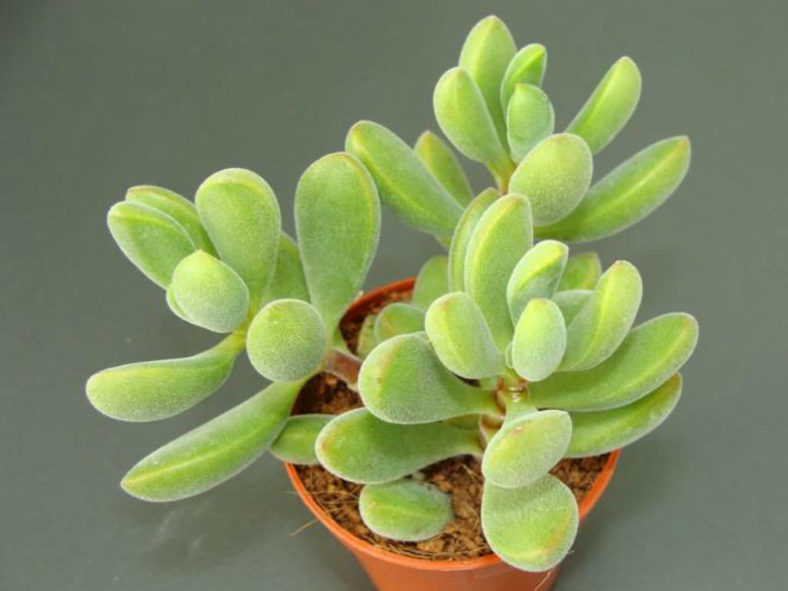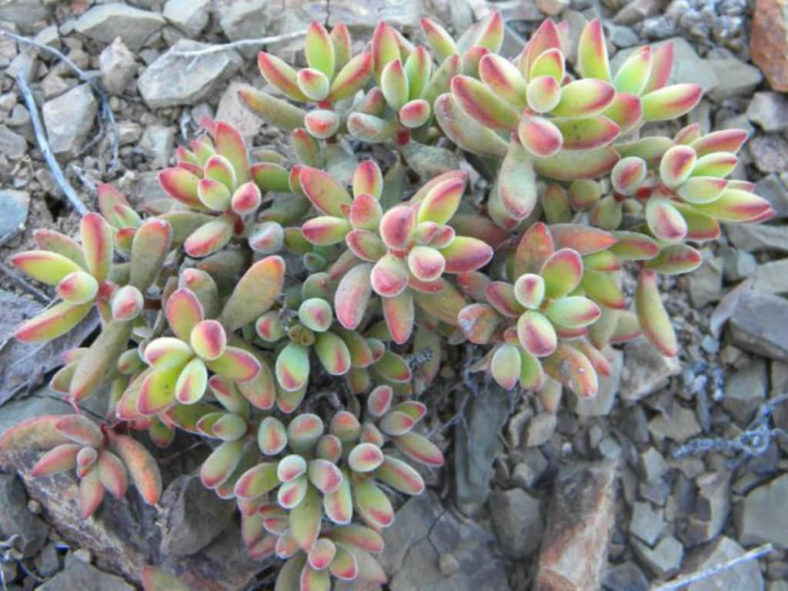Scientific Name
Crassula rogersii Schönland
Synonym(s)
Globulea rogersii
Scientific Classification
Family: Crassulaceae
Subfamily: Crassuloideae
Genus: Crassula
Etymology
The specific epithet "rogersii" (pronounced "ro-JERZ-ee-eye") most likely honors William Moyle Rogers (1835–1920), an Anglican clergyman and plant collector in South Africa.
Origin
Crassula rogersii is native to South Africa. It grows in dry river valleys in thickets in the Eastern Cape.
Description
Crassula rogersii is a small, usually highly branched succulent shrub with erect to decumbent branches and fleshy, club-shaped leaves. It can grow up to 12 inches (30 cm) tall. The stems are green and succulent, becoming reddish-brown with age. The leaves are densely covered with short white hairs, giving them a velvety texture. They remain green in shady spots but are at their best with plenty of sunlight, where they become red at the tips and around the margins.
In summer, Crassula rogersii produces pale yellow, tubular to almost cylindrical flowers held in small clusters at the end of slender stalks that can reach a length of 8 inches (20 cm).

Forms of Crassula rogersii
How to Grow and Care for Crassula rogersii
Hardiness: USDA hardiness zones 9b to 11b: from 25°F (-3.9°C) to 50°F (10°C).
Crassulas are easy to grow but susceptible to mealybugs and fungal diseases. As with all succulents, overwatering is sure to be fatal, so err on the side of being too dry rather than too wet. Never let your plant sit in water. If you water from beneath by allowing the plant to sit in a saucer with water, ensure that you pour off any excess water after a few minutes.
These succulents are generally started by division, offsets, or leaf cuttings. Crassulas can be easily propagated from a single leaf. Sprout leaves by placing them into a potting mix for succulents, then cover the dish until they sprout.
Repot as needed, preferably during the warm season. To repot your Crassula, ensure the soil is dry before repotting, then gently remove the pot. Knock away the old soil from the roots, removing any rotted or dead roots. Treat any cuts with a fungicide. Place the plant in its new pot and backfill it with potting soil, spreading the roots as you repot. Leave the plant dry for a week or so, then begin to water lightly to reduce the risk of root rot.
Learn more at How to Grow and Care for Crassula.
Links
- Back to genus Crassula
- Succupedia: Browse succulents by Scientific Name, Common Name, Genus, Family, USDA Hardiness Zone, Origin, or cacti by Genus
Photo Gallery
Click on a photo to see a larger version.


